July 3, 2025

The article highlights nine essential techniques in Applied Behavior Analysis (ABA) that are critical for effective behavior analysis and intervention. Did you know that the demand for Board Certified Behavior Analysts (BCBAs) is on the rise? These techniques, which include:
are backed by research demonstrating their effectiveness in improving communication, reducing challenging behaviors, and promoting skill acquisition. This not only enhances individual development but is particularly beneficial for those with autism.
As you consider your recruitment strategies, reflect on how these proven methods can transform your approach to behavior analysis and intervention. By leveraging these techniques, you can significantly improve developmental outcomes for individuals in your care.
Explore how Hire ABA can assist you in finding qualified professionals who are well-versed in these methodologies and can implement them effectively.
As the demand for Board Certified Behavior Analysts (BCBAs) surges—by over 30% in recent years—the landscape of Applied Behavior Analysis (ABA) therapy is evolving rapidly. Innovative techniques are emerging to enhance effectiveness. This article explores nine essential ABA techniques that not only improve behavior analysis but also empower practitioners and families alike. Yet, with numerous strategies available, how can professionals discern which methods will yield the best outcomes for their clients? Delving into these techniques may hold the key to unlocking transformative results in behavior modification and skill development. Consider how these advancements can address your current hiring challenges and elevate your practice.
The demand for Board Certified Behavior Analysts (BCBAs) is projected to rise by 25% by 2026. In this rapidly expanding field of Applied Behavior Analysis (ABA) therapy, Hire ABA serves as a specialized recruitment platform that focuses on ABA techniques specifically tailored for BCBAs. By leveraging advanced algorithms and a user-friendly interface, it connects BCBAs with top-tier job opportunities.
Are you facing challenges in finding the right job opportunities? Hire ABA offers that highlights positions aligning with your abilities, preferences, and preferred locations, guaranteeing an ideal match. From application to negotiation, we provide expert guidance and support, streamlining the job matching process.
This not only saves time for job seekers but also ensures that employers find qualified professionals who align with their organizational needs. Platforms like Hire ABA are essential for effectively navigating this competitive job market. Don't miss out on the opportunity to advance your career—explore the possibilities with Hire ABA today.
Positive reinforcement is a cornerstone technique in ABA techniques, involving the provision of a rewarding stimulus immediately following a desired action. This approach significantly enhances the likelihood of that action being repeated. Reinforcement can take various forms, including verbal praise, tangible rewards, or access to preferred activities.
For instance, when a young individual effectively communicates their needs, offering immediate praise or a small reward not only strengthens that action but also encourages continued use of their communication skills. Research indicates that when reinforcement is tailored to individual preferences and delivered promptly, the effectiveness of modification strategies is greatly enhanced.
Furthermore, successful implementations of ABA techniques that utilize positive reinforcement have demonstrated remarkable progress in 90% of individuals, particularly when caregivers actively engage and adhere to recommended hours of involvement. Understanding what specifically motivates each young person is crucial; lead to more effective behavior modification and skill development.
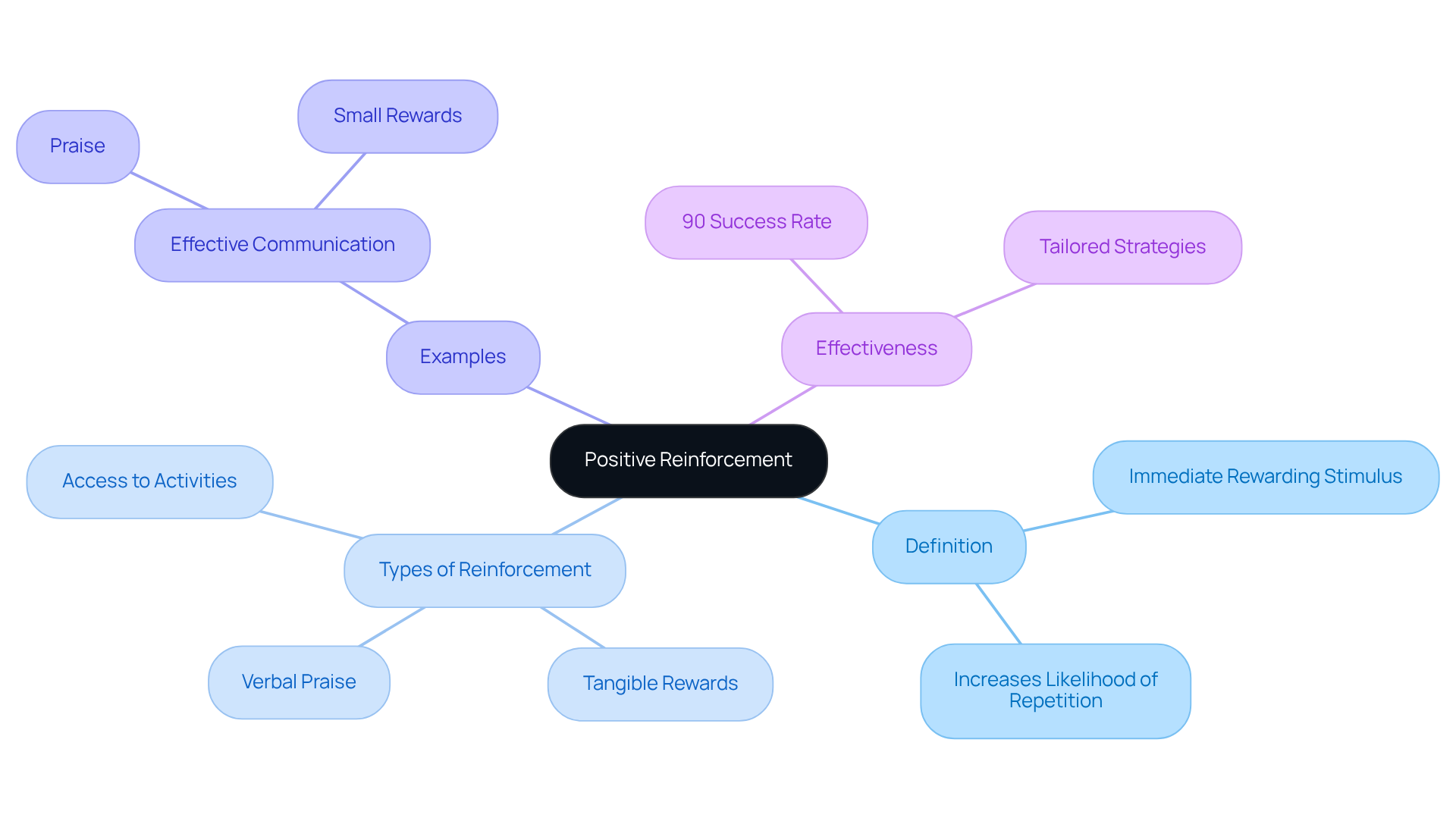
Discrete Trial Training (DTT) stands as a pivotal instructional method within ABA therapy, which employs ABA techniques to meticulously deconstruct complex skills into smaller, manageable components. Each trial is characterized by a clear instruction, a prompt, and a learner's response, followed by immediate feedback. For example, when guiding a child to identify colors, a therapist might present a red block and ask, 'What color is this?' A correct response is met with praise or a tangible reward, effectively reinforcing the desired behavior. This systematic approach, utilizing , not only enhances skill acquisition but also facilitates data collection, enabling therapists to monitor progress and refine their teaching strategies.
Recent advancements in DTT have emphasized the integration of generalization techniques. This ensures that skills learned in structured environments are transferable to real-world situations. Evidence strongly supports the efficacy of DTT, with studies revealing significant improvements in communication (effect size g=0.650) and expressive language abilities (effect size g=0.742) among youth with autism. By employing positive reinforcement tailored to individual preferences, DTT cultivates engagement and motivation, establishing itself as an invaluable tool in modern ABA techniques.
Successful implementations of DTT have showcased its potential to foster functional independence and overall development in individuals with Autism Spectrum Disorder (ASD). This addresses historical critiques and enhances its practical effectiveness. Are you ready to explore how DTT can transform your approach to therapy? The evidence is compelling, and the benefits are clear.
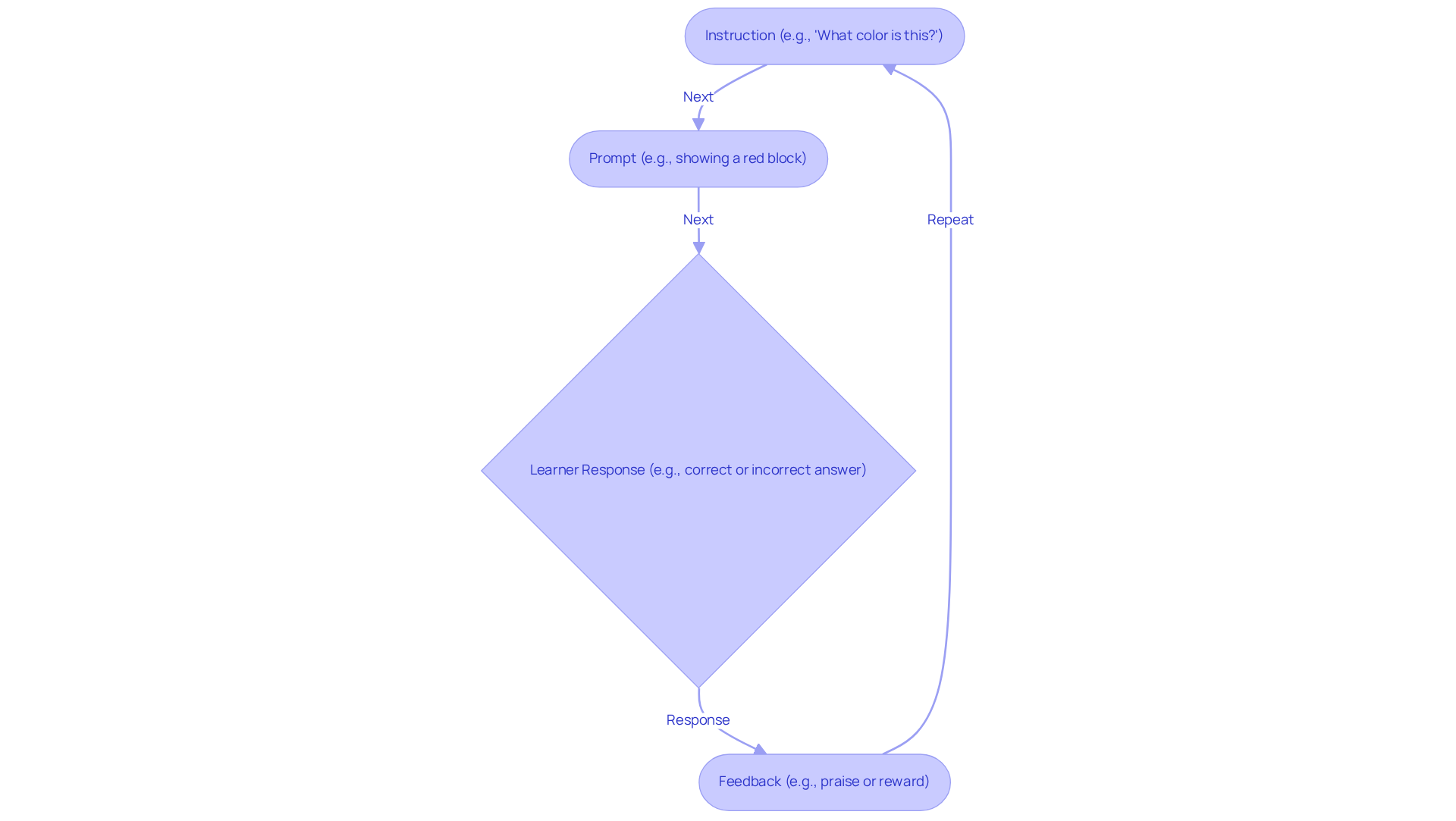
Functional Communication Training (FCT) stands as a vital intervention designed to equip individuals with alternative communication strategies that effectively replace challenging behaviors. Consider a scenario where a child resorts to tantrums to gain attention; FCT empowers them to articulate their needs through simple phrases or signs. This method not only mitigates problematic behaviors but also enables individuals to convey their desires with clarity. Particularly beneficial for children with autism, FCT significantly enhances communication skills across diverse settings, promoting social interactions and reducing frustration.
Research underscores the success of FCT implementations, revealing notable decreases in challenging behaviors and demonstrating its efficacy in fostering positive behavioral outcomes. By prioritizing communication, FCT addresses immediate behavioral issues while simultaneously nurturing essential social skills for long-term development.
For healthcare employers eager to delve deeper into FCT, an upcoming webinar titled 'Functional Communication Training: A Review and Update of Research' is scheduled for December 22, 2022, at 11:00 am ET, led by Peter Sturmey, Ph.D. Attendees can earn 3 BACB Ethics CEUs, highlighting the professional development opportunities associated with FCT. This webinar promises to deliver and the latest evidence supporting FCT's effectiveness, making it an invaluable resource for those seeking to implement FCT in practice.
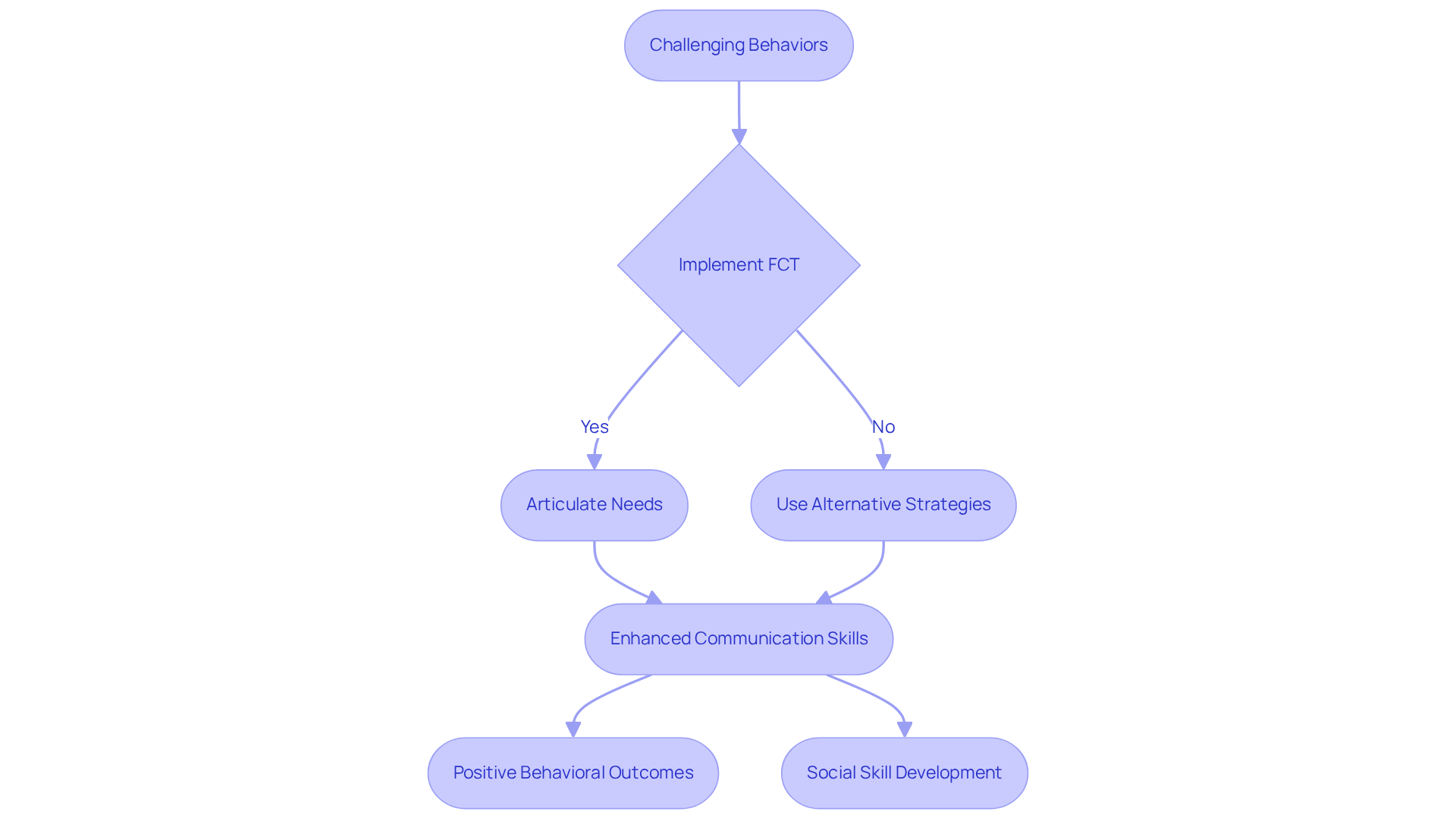
Natural Environment Teaching (NET) represents a transformative approach to education, emphasizing ability development within a learner's natural surroundings—be it at home or in the community. This method significantly enhances the relevance and retention of acquired skills by allowing children to apply them in real-life contexts. For instance, teaching a child to request a snack can seamlessly occur during snack time at home rather than in a sterile clinical setting.
Recent research indicates that children engaged in NET exhibit superior language acquisition and adaptive skills compared to those subjected to traditional methods like Discrete Trial Training (DTT). By integrating learning opportunities into everyday activities, NET not only fosters engagement and motivation but also leads to more effective knowledge generalization.
Behavior analysts underscore the critical role of real-world learning environments, asserting that skills learned in familiar settings are more likely to be retained and effectively utilized in daily life. As experts affirm, "Skills learned in natural contexts are more likely to be applied in everyday situations," which underscores the value of this approach.
Techniques such as Incidental Teaching and Mand-Model are essential components of NET, representing ABA techniques that offer structured yet adaptable strategies for instruction within these natural environments. This methodology has demonstrated a , establishing it as a crucial element of effective ABA techniques.
For healthcare employers, implementing NET techniques can lead to improved therapy results and greater support for children with autism.
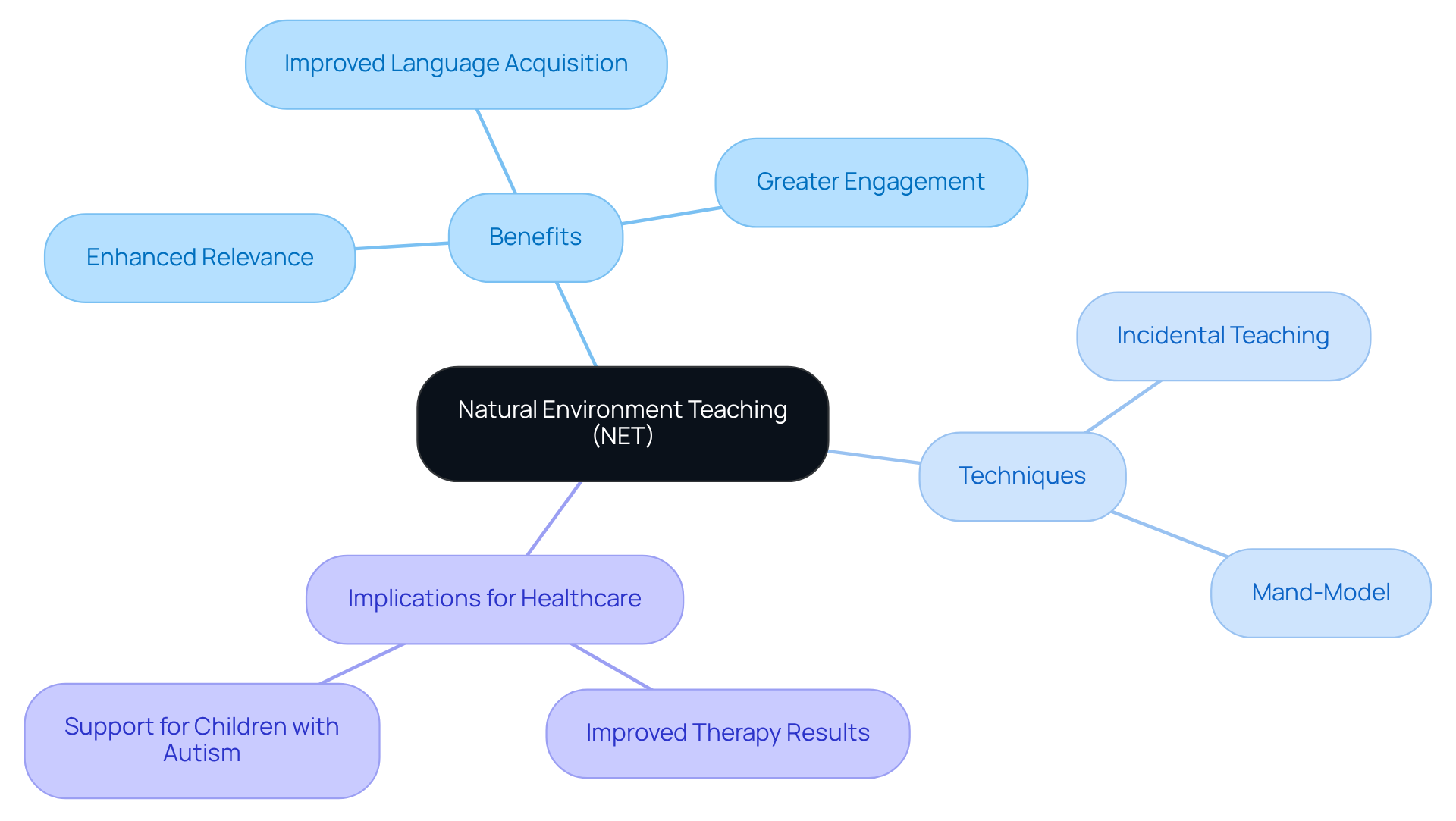
The demand for Board Certified Behavior Analysts (BCBAs) is projected to increase by 25% by 2026, underscoring the critical need for effective behavioral intervention strategies. At the core of these strategies lies the A-B-C analysis model, a foundational framework in Applied Behavior Analysis, consisting of three key components: Antecedent, Behavior, and Consequence. This model empowers practitioners to dissect the , the actions themselves, and the outcomes that ensue.
Consider a scenario where a child screams (behavior) to obtain a toy (antecedent) and subsequently acquires the toy (consequence). The A-B-C analysis highlights a reinforcing cycle that strengthens the screaming behavior. By thoroughly understanding these dynamics, BCBAs can develop targeted strategies to modify either the antecedents or the consequences, fostering the emergence of more positive behaviors.
Recent studies have illuminated the importance of this analysis, revealing that systematic data collection and modification techniques, particularly aba techniques, can lead to significant improvements in communication and social skills among youth undergoing ABA therapy. Notably, children who engage in ABA therapy before the age of five exhibit substantial advancements in these areas compared to their peers who begin therapy later. Furthermore, effective application of aba techniques and the A-B-C analysis has been shown to reduce challenging behaviors, enhancing the overall quality of life for individuals in treatment.
As the landscape of ABA therapy evolves, mastering the A-B-C analysis and ABA techniques becomes essential for professionals committed to implementing evidence-based practices in their interventions. As one ABA practitioner aptly stated, 'Understanding the dynamics of behavior through A-B-C analysis is essential for creating effective intervention strategies.' Reflect on your current hiring challenges—how can Hire ABA assist you in securing the expertise necessary to navigate this growing demand?
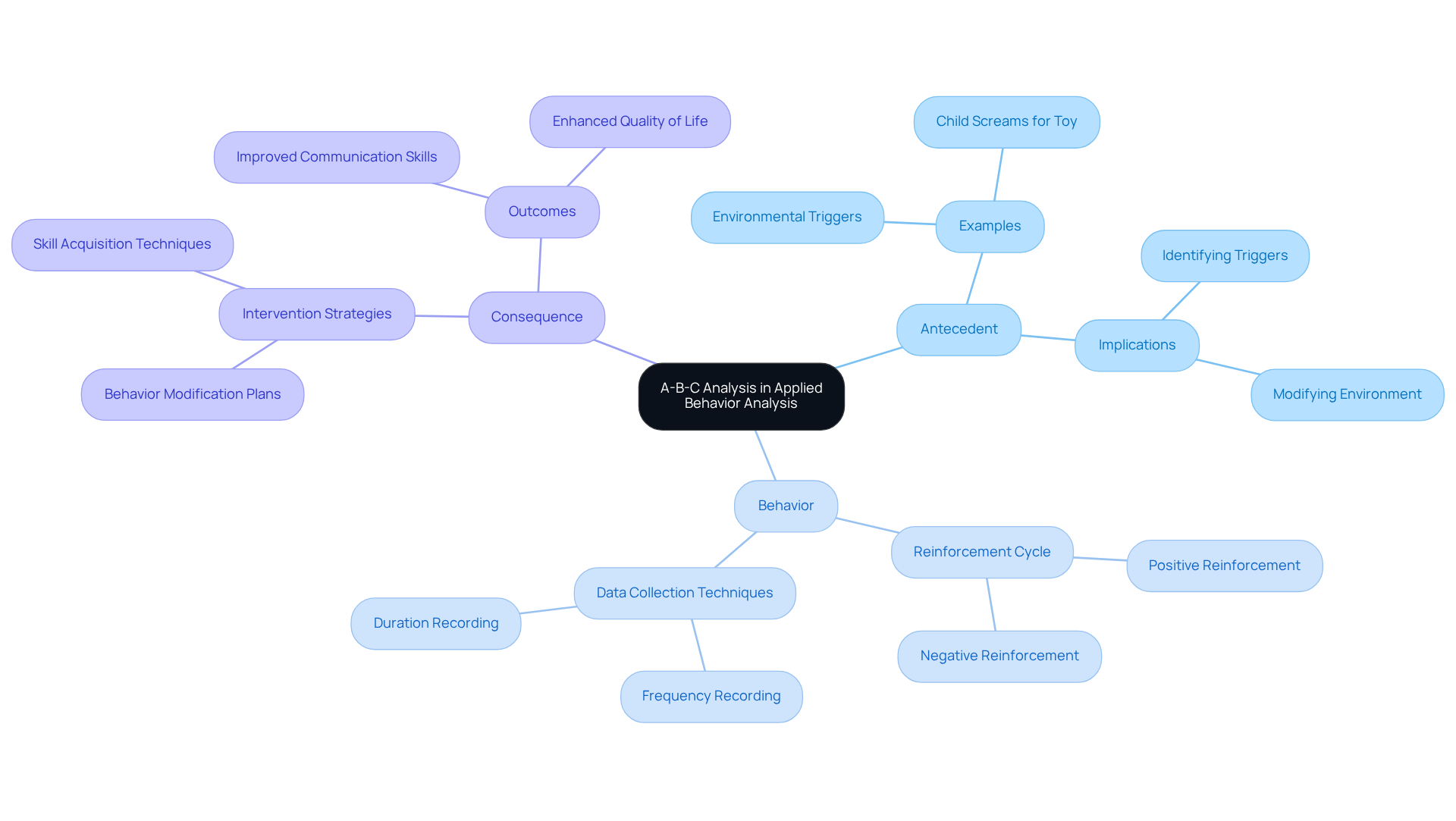
Pivotal Response Training (PRT) is a dynamic intervention designed to enhance pivotal areas of development in young individuals, such as:
This focus on essential areas enables significant advancements across various facets of a young person's growth. Did you know that approximately 1 in 6 youngsters in the U.S., or 17%, experiences at least one developmental delay? This statistic underscores the critical need for interventions like PRT.
By encouraging youngsters to initiate interactions with peers through engaging activities that serve as incentives, PRT effectively fosters essential social skills. This method not only hones specific abilities but also nurtures holistic development, encompassing:
As such, PRT is considered one of the invaluable ABA techniques within Applied Behavior Analysis (ABA) therapy. Furthermore, effective early intervention can reduce the risk of behavioral problems by 45%.
Success stories abound, showcasing how PRT has transformed the lives of young individuals by fostering independence and enhancing their ability to engage with others. Ultimately, PRT paves the way for a brighter future, emphasizing the importance of .
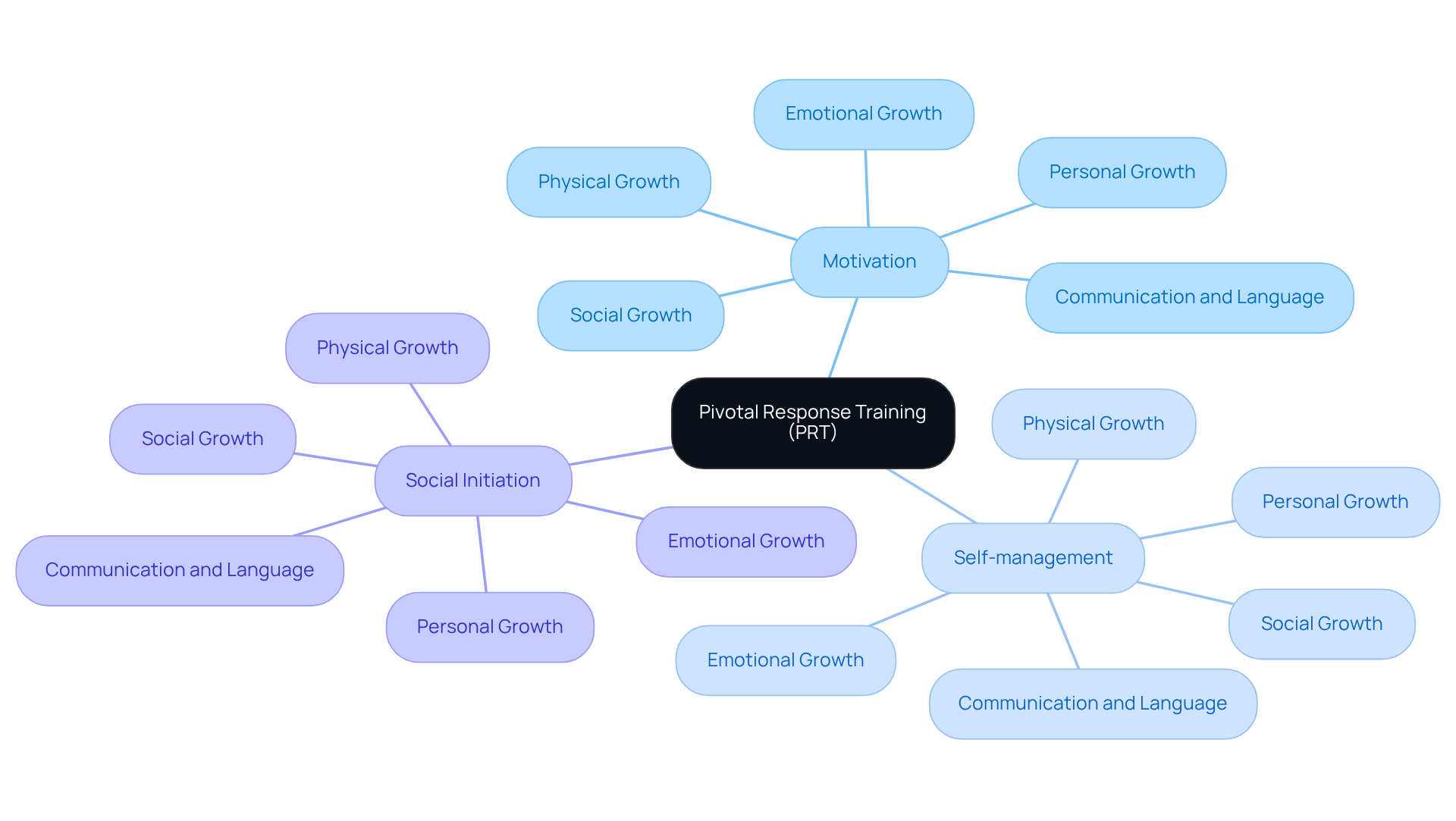
Extinction is a pivotal process in ABA techniques that is designed to decrease unwanted behaviors by systematically withholding the reinforcement that sustains them. For instance, when a child throws a tantrum to gain attention, consistently denying that attention can lead to a gradual reduction in tantrum occurrences. Initially, this phase may present what is termed an 'extinction burst,' where the behavior temporarily intensifies before it ultimately diminishes. Research indicates that 26.67% of inelastic EO participants exhibited an extinction burst during studies, underscoring the significance of comprehending this phenomenon.
Differential reinforcement further enhances extinction by promoting preferred behaviors while withholding support for undesired ones. This dual strategy not only modifies challenging actions but also fosters positive change. For example, if a child is rewarded for using appropriate communication instead of having a fit, the likelihood of the preferred behavior increases. Current studies reveal that the mean latency to extinction varies considerably across different conditions, with EO participants averaging 340.4 seconds.
Successful applications of ABA techniques have been documented across various case studies. A notable example involved a young individual whose attention-seeking tantrums were effectively mitigated through a blend of extinction and differential reinforcement strategies. By consistently ignoring the tantrums while praising and rewarding the child for articulating needs, practitioners observed a significant decline in unwanted behaviors over time.
Current research emphasizes the importance of ethical considerations when implementing these techniques. Behavior analysts advocate for a trauma-informed approach, ensuring that interventions prioritize the emotional well-being of the child. This involves understanding the fundamental functions of behaviors and rather than solely focusing on behavior reduction. As one specialist articulated, 'When executed properly, extinction can effectively diminish undesirable actions while promoting more suitable alternatives.'
In conclusion, the combination of extinction and differential reinforcement techniques provides a robust framework for modifying challenging behaviors using ABA techniques. By focusing on ethical practices and the individual needs of each child, practitioners can cultivate a supportive environment that encourages positive change.
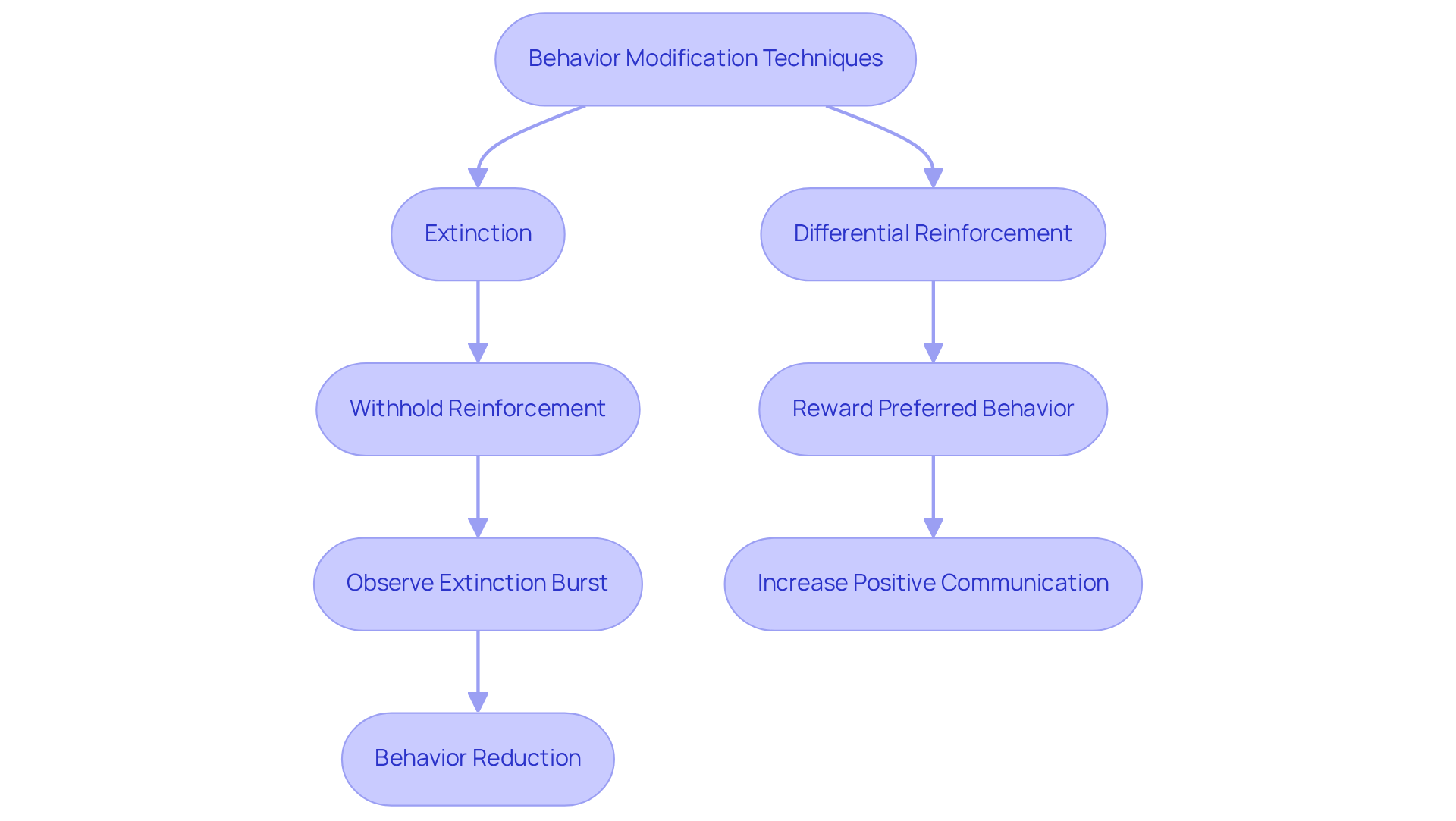
Video modeling stands out as a that utilizes video recordings to showcase desired actions or skills, proving particularly advantageous for individuals with autism. This approach offers a clear visual representation of the behavior being taught, which is essential for learners who may find traditional verbal instructions challenging. For example, a video depicting a peer sharing toys serves as an accessible model for a young child learning to share, significantly enhancing their ability to replicate and grasp the intended skills.
The adaptability of video modeling allows for its application in diverse settings, ranging from classrooms to home environments, establishing it as an invaluable resource in [ABA techniques](https://hireaba.today). Current statistics reveal that video modeling has been successfully integrated into 75% of ABA techniques, highlighting its widespread acceptance and effectiveness. Furthermore, research shows that individuals with autism who engage with video modeling experience a 43% increase in skill acquisition compared to those who do not.
Insights from ABA professionals further emphasize the significance of visual learning and the use of ABA techniques in this context. One expert remarked, 'Visual supports like video modeling not only clarify expectations but also empower children to learn at their own pace.' This method, which incorporates ABA techniques, not only promotes independence but also fosters confidence in social interactions, making it a fundamental technique in effective behavior analysis.
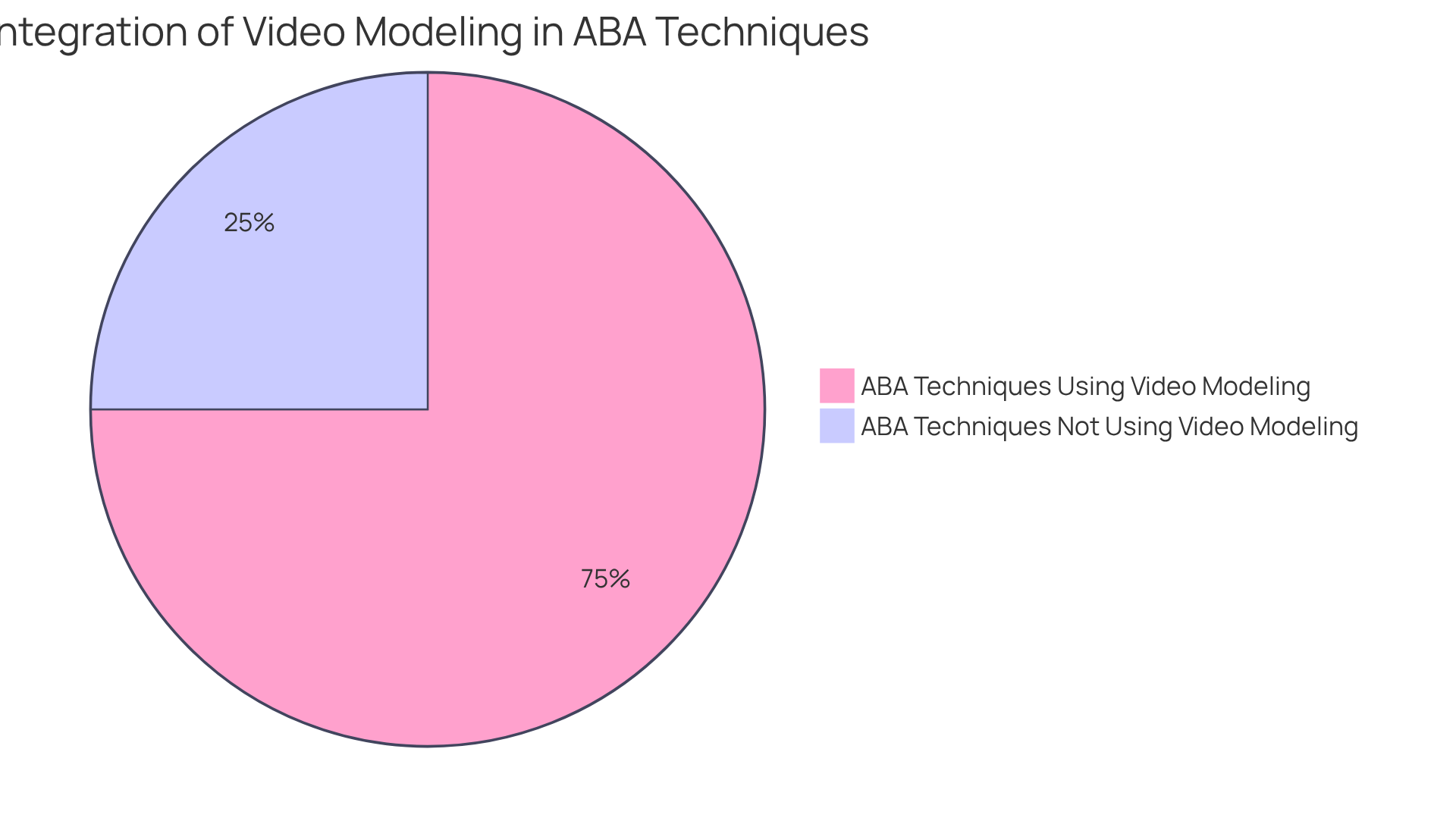
Parent-implemented interventions (PII) play a crucial role in enhancing the effectiveness of ABA therapy by training and collaborating with parents to reinforce skills learned in therapy. By equipping parents with essential tools and strategies, PII significantly supports their children's development. For instance, parents can be trained to implement specific reinforcement techniques at home, ensuring consistency in the child's learning environment.
Research consistently shows that active parental involvement correlates with improved developmental outcomes. This underscores the as a vital component of successful ABA techniques. Are you considering how to integrate such strategies into your practice? Emphasizing parental engagement can lead to transformative results. In the competitive landscape of ABA therapy, leveraging PII not only strengthens therapy outcomes through ABA techniques but also empowers parents, making it an indispensable strategy for practitioners aiming for excellence.
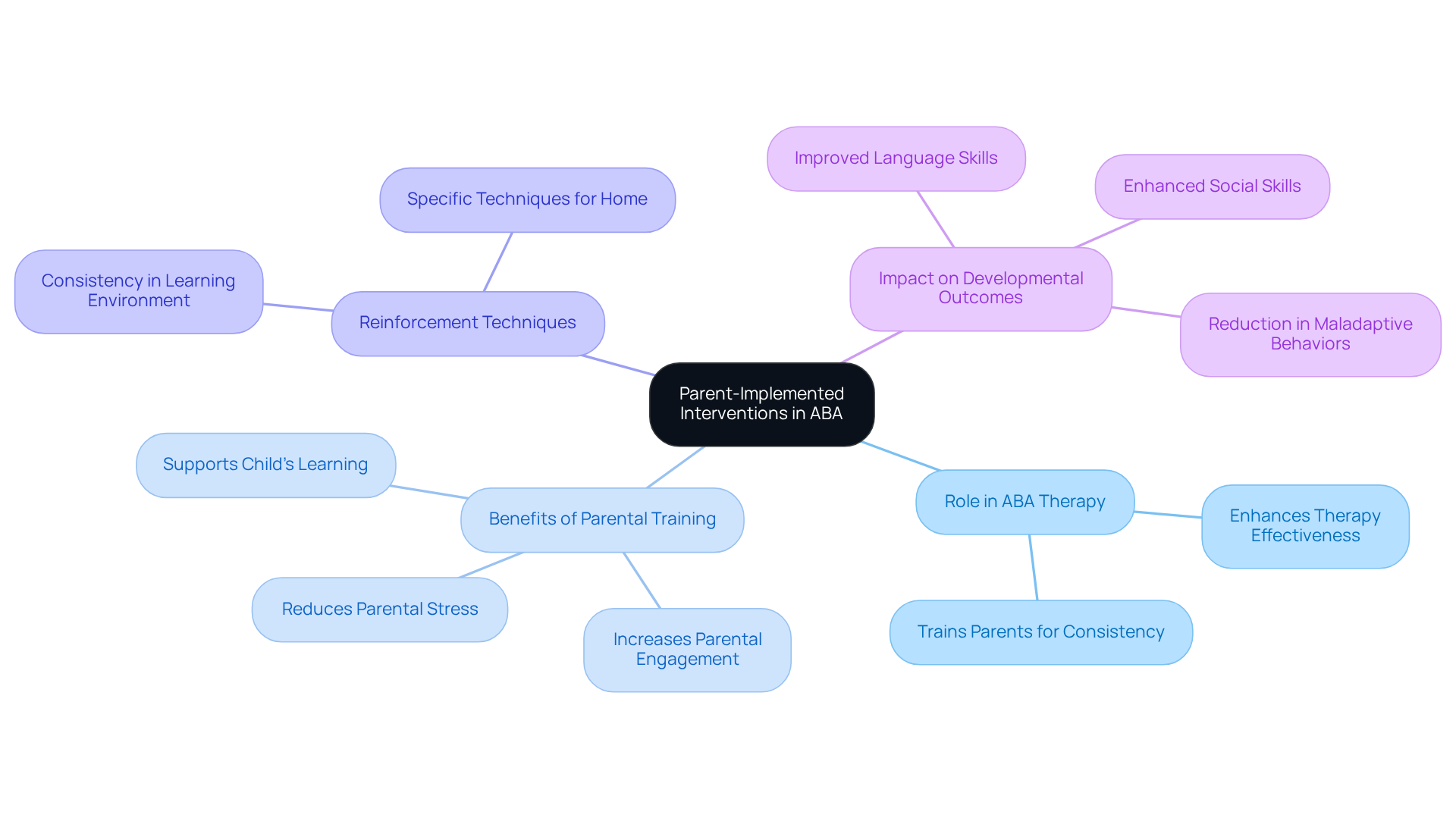
The exploration of essential ABA techniques reveals the critical role these methods play in effective behavior analysis and therapy. As the demand for Board Certified Behavior Analysts (BCBAs) continues to rise—projected to increase by 25% over the next decade—understanding and implementing strategies such as:
becomes imperative for practitioners. These techniques significantly enhance developmental outcomes for individuals, particularly those with autism, facilitating skill acquisition while fostering an environment conducive to learning and growth.
Key insights emphasize the importance of tailored interventions like:
These approaches allow for a deeper understanding of behavior dynamics and the application of learned skills in real-world contexts. Moreover, the integration of parent-implemented interventions underscores the necessity of family involvement in the therapeutic process. This involvement reinforces the skills taught during therapy, ensuring consistency in the child's learning environment.
Engaging with platforms like Hire ABA can streamline the hiring process, connecting professionals with the right opportunities and resources to thrive in this evolving field. Consider your current hiring challenges—how can Hire ABA address these issues? Embracing these techniques is essential for practitioners aiming to deliver impactful, evidence-based interventions. The significance of these ABA techniques cannot be overstated; they not only transform individual lives but also contribute to a more informed and effective approach to behavior analysis. This paves the way for a brighter future in therapeutic practices.
What is Hire ABA?
Hire ABA is a specialized recruitment platform designed for Board Certified Behavior Analysts (BCBAs) that connects them with job opportunities in the field of Applied Behavior Analysis (ABA) therapy.
What is the projected demand for BCBAs by 2026?
The demand for Board Certified Behavior Analysts (BCBAs) is projected to rise by 25% by 2026.
How does Hire ABA assist job seekers?
Hire ABA offers customized job match scoring that highlights positions aligned with the job seeker's abilities, preferences, and preferred locations, providing expert guidance and support throughout the job matching process.
What is positive reinforcement in ABA therapy?
Positive reinforcement is a technique in ABA that involves providing a rewarding stimulus immediately after a desired action to increase the likelihood of that action being repeated.
What forms can positive reinforcement take?
Positive reinforcement can include verbal praise, tangible rewards, or access to preferred activities.
How effective is positive reinforcement in behavior modification?
Research shows that when reinforcement is tailored to individual preferences and delivered promptly, it significantly enhances the effectiveness of behavior modification strategies, with successful implementations achieving progress in 90% of individuals.
What is Discrete Trial Training (DTT)?
Discrete Trial Training (DTT) is an instructional method within ABA therapy that breaks down complex skills into smaller, manageable components, using clear instructions, prompts, and immediate feedback.
How does DTT facilitate skill acquisition?
DTT enhances skill acquisition by providing structured trials and allows for data collection to monitor progress and refine teaching strategies.
What evidence supports the efficacy of DTT?
Studies have shown significant improvements in communication and expressive language abilities among youth with autism, with effect sizes of g=0.650 and g=0.742, respectively.
How does DTT address historical critiques of ABA therapy?
Recent advancements in DTT emphasize the integration of generalization techniques, ensuring that skills learned in structured environments are transferable to real-world situations, thereby enhancing its practical effectiveness.
Our expert recruitment strategies and AI-driven sourcing ensure that you receive top-notch candidates quickly, without compromising on quality. Whether you’re looking for BCBAs, Clinical Directors, or RBTs, we’ve got you covered.